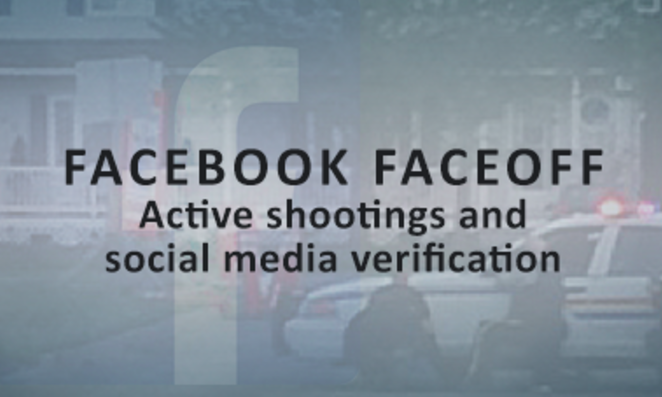Active shootings and social media verification.
By Casimir Boivin, Avneet Dhillon, David Greenberg and Kayla Rosen
In the summer of 2014 Sammy Hudes was working as an intern at the National Post. On June 4 news broke that there had been a shooting in Moncton, N.B., that left three RCMP officers dead and two others wounded. [1]
The police held a press conference concerning the shooting and released the name and a picture of the suspected killer, Justin Bourque. Once the name was released, people began doing background research on Bourque and a Facebook profile with the same name began to circulate on Twitter. This profile featured anti-RCMP and pro-gun sentiments, as well as cryptic heavy metal lyrics posted just before the shooting. Although this appeared to be the same Justin Bourque, nothing had been confirmed at this point.
Hudes and two National Post editors, Jo-Anne MacDonald and Joe Hood, were working on the story and compared the information that they had on Bourque to the Facebook profile. Although there seemed to be a lot of similarities, they were still not 100 per cent sure that it was the same person. Hudes also worried that a name like Bourque is not uncommon in the East Coast and therefore he had more of a chance of getting this wrong.
At this point Hudes, MacDonald and Hood had a choice: they could act in the public interest and include the profile in the story, but risk implicating an innocent person in a murder, risk ruining a person’s reputation and risk a libel suit. Or they could exclude the information all together and wait until it had been verified before using it in a story. During this deliberation Hudes also learned through Twitter that other news organizations, such as the Toronto Star had chosen not to include this Facebook profile in their stories.
The decision on how to proceed came down to two questions: does the public’s right to know outweigh the possible risks of reporting this information and is this information even necessary to include in the article?

